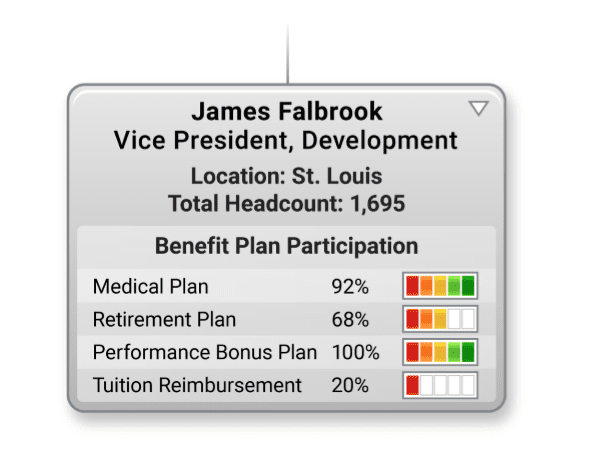January 22, 2020
1:31 PM
By OrgChart Team
Emotional wellness can no longer be ignored when examining the overall health of a workforce. Between 2013 and 2016, major depression diagnoses grew most significantly among adolescents (up 63 percent) and millennials (up 47 percent), according to the Blue Cross Blue Shield Association (BCBSA)’s Health of America Report. Millennials are the “mental health generation” but thankfully they are more likely to seek help and break the stigma around mental health suffered by generations previous.
Pumping up mental health support for employees—aside from just being the right thing to do—is good business sense. It’s estimated that the total workplace costs of mental illness and substance abuse disorders range from $79 billion to $105 billion per year. Researchers estimate that 36 million workdays are lost each year in the US due to behavioral health disorders, costing employers about $5 billion annually. The mental health issues most strongly affecting this decrease in productivity are major depression, social phobia, and alcohol abuse.
One company leading the way on employee wellness awareness and support is Google. Beyond simply giving access to healthcare, Google has designed a rich infrastructure of events, forums and resources. Talks At Google often feature world-renowned psychotherapists, mindfulness teachers and wellness experts and are later made accessible to all through video recordings.
Genentech is another leader when it comes to focusing on the mental and emotional wellness of employees by spearheading tangible everyday solutions for its workforce. Genentech gave Headspace, an app which leads people through therapeutic guided meditations, to all of its employees.
Not every company can afford the innovative sweeping strides that Google and Genentech have made. But it’s not just the tech giants; companies everywhere are beginning to prioritize mental health as an integral part of employee culture. Measures that focus on the whole person like flex hours, telecommuting even choice of office furniture or plants along with job satisfaction surveys and regular, effective appraisals and reviews have become common place. Steps such as group sessions with mental health professionals and the subsidizing of services such as therapy bills, life coaching and even massages and being added.
In the push to improve emotional wellness in the workplace, your organization must first know which programs are being used and to what extent. EAP (employee assistance programs) that help with addictions and coping problems along with efforts your company is making to place the right people in the right positions need to be looked at. You also need to know the types of plans that are being overlooked and assess overall costs. OrgChart’s Employee Benefit Participation charts can be used by managers to review the benefits employees use and potentially recommend or highlight additional programs that might improve employee well being.

To set up an Employee Benefit Participation chart to better assess your mix of emotional wellness offerings, download a free trial of OrgChart software today.
Tags: